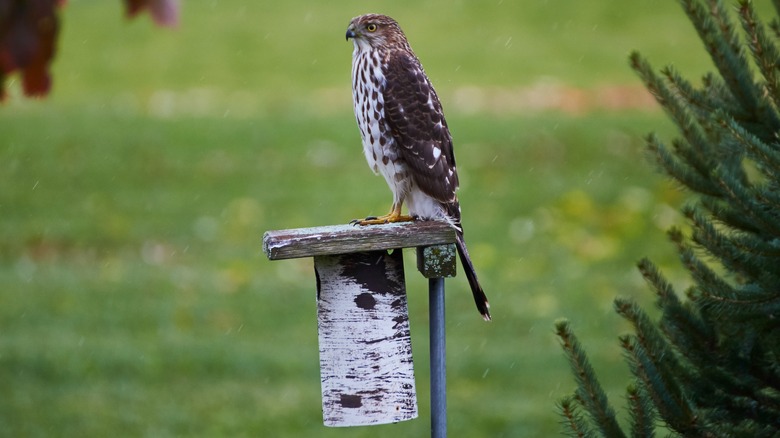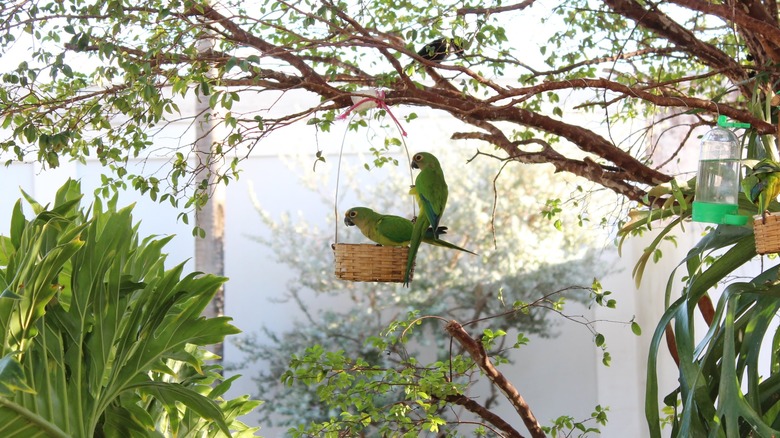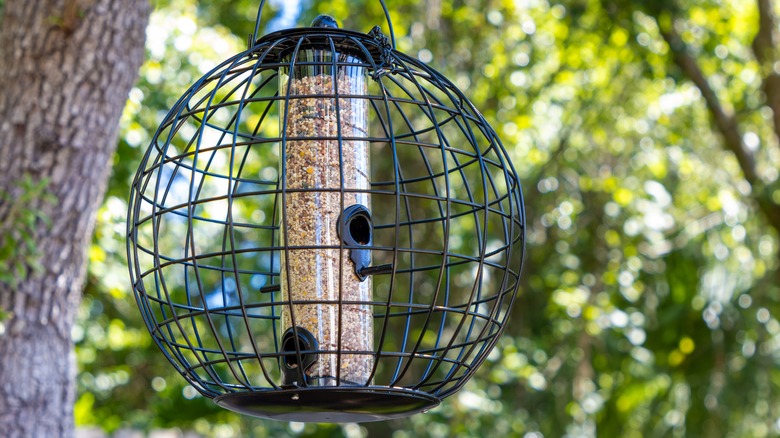Simple Tips To Keep Hawks Away From Your Bird Feeder
We may receive a commission on purchases made from links.
Bird feeders are a wonderful way to bring a variety of birds into your garden, but sometimes they also attract breeds you might not want in your space. Hawks are natural hunters, and bird feeders create a hotspot of potential prey for them. Seeing a hawk attack can be really upsetting, and it can scare or keep away the smaller birds that you want to visit your yard. Luckily, there are some simple tricks to keep these feathered predators away without bothering the birds you hope to attract. The key is understanding how hawks hunt and what small birds need to feel safe.
Balancing the needs of small birds with keeping hawks at bay mainly involves two tactics: a smart feeder setup and creating a safe environment for the smaller birds. Hawks like open spaces and clear views for hunting, so making a few adjustments to your feeders and garden can help keep them away. Let's dive into the two main approaches: finding the best place to hang your bird feeders and providing plenty of cover and protection for small birds.
Strategic feeder placement
As mentioned, hawks prefer hunting in open spaces where they can easily spot and swoop down on their prey. By placing your feeders in more sheltered or harder-to-reach spots, you can make it tougher for them to attack. Try putting feeders near dense bushes, under tree branches, or close to the sides of buildings. These spots give small birds a quick escape route and make it harder for hawks to get to them. However, keep in mind that experts recommend keeping feeders about 10–15 feet away from shrubs or bushes. This distance helps prevent ground predators, like cats, from using the areas as hiding spots while the birds are feeding. This way, they can perch safely and remain safe from hawks without giving ground predators a chance to sneak up on them.
Also, think about the height of your feeders. Ground feeders are easier targets for hawks because they're more visible. You should hang your feeders about 5 to 6 feet above the ground to make it more challenging for hawks to swoop down on the feeding birds.
Ample feeder cover and protection
Creating a safe environment for smaller birds means giving them plenty of cover and protection around your feeders. In addition to dense shrubs, trees, and hedges, you can also create safe zones for birds by adding brush piles or small thickets to your garden. Brush piles offer a number of benefits to your yard, including providing birds with a quick hiding spot if a hawk appears. To make one, simply stack fallen branches, twigs, and leaves in a corner of your yard.
The type of feeder you use matters, too. For instance, you can get feeders with cages around them, which let small birds in but keep hawks out. These cage-style feeders are great at protecting small birds while still letting them feed comfortably. You can find caged feeders at Target for $66. You can also add birdhouses and roosting boxes near your feeders for extra protection. These can provide spots for birds to hide if a hawk comes around. Just ensure the birdhouses have entrances that are big enough for small birds but too tiny for hawks to get inside.


